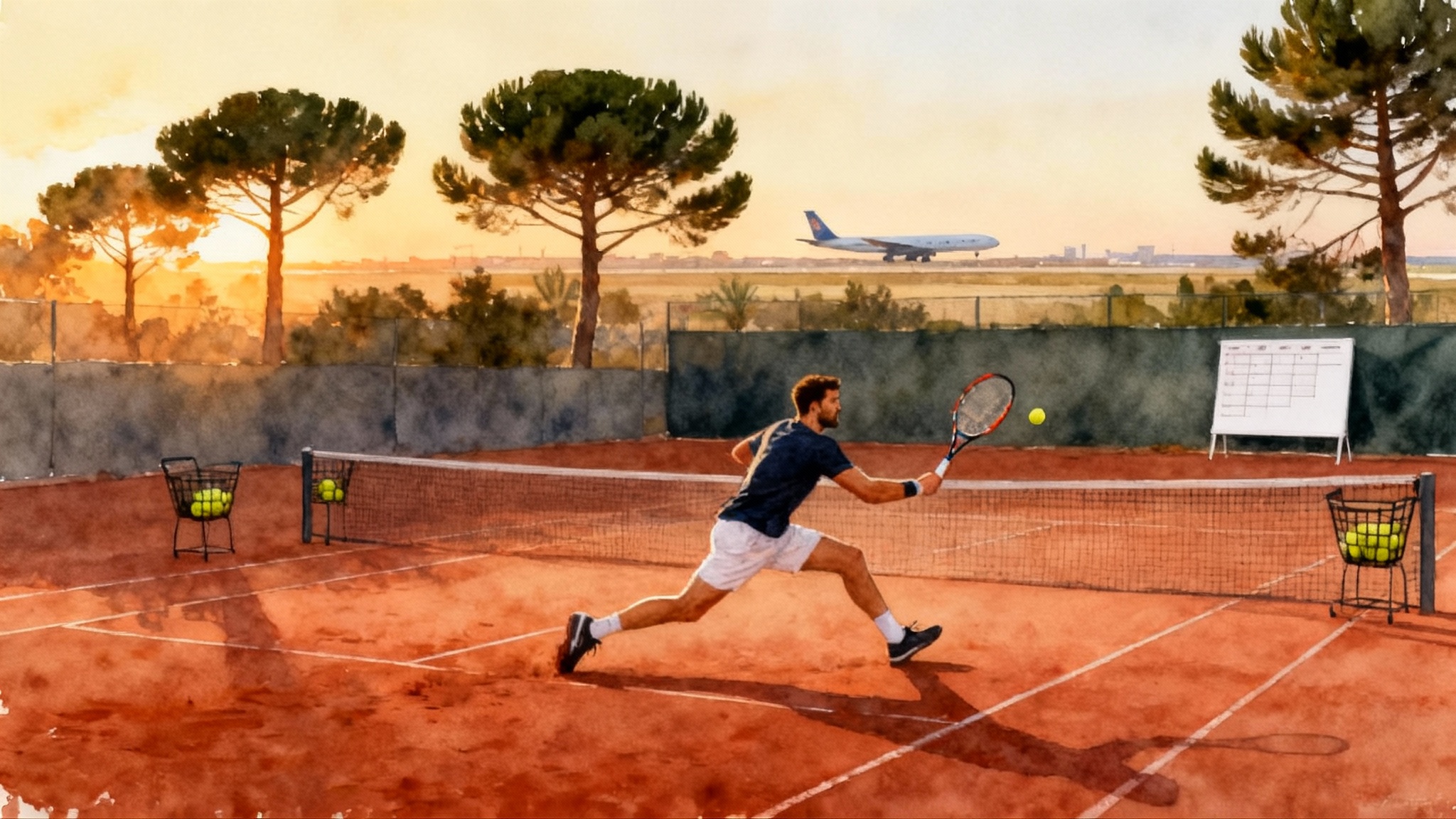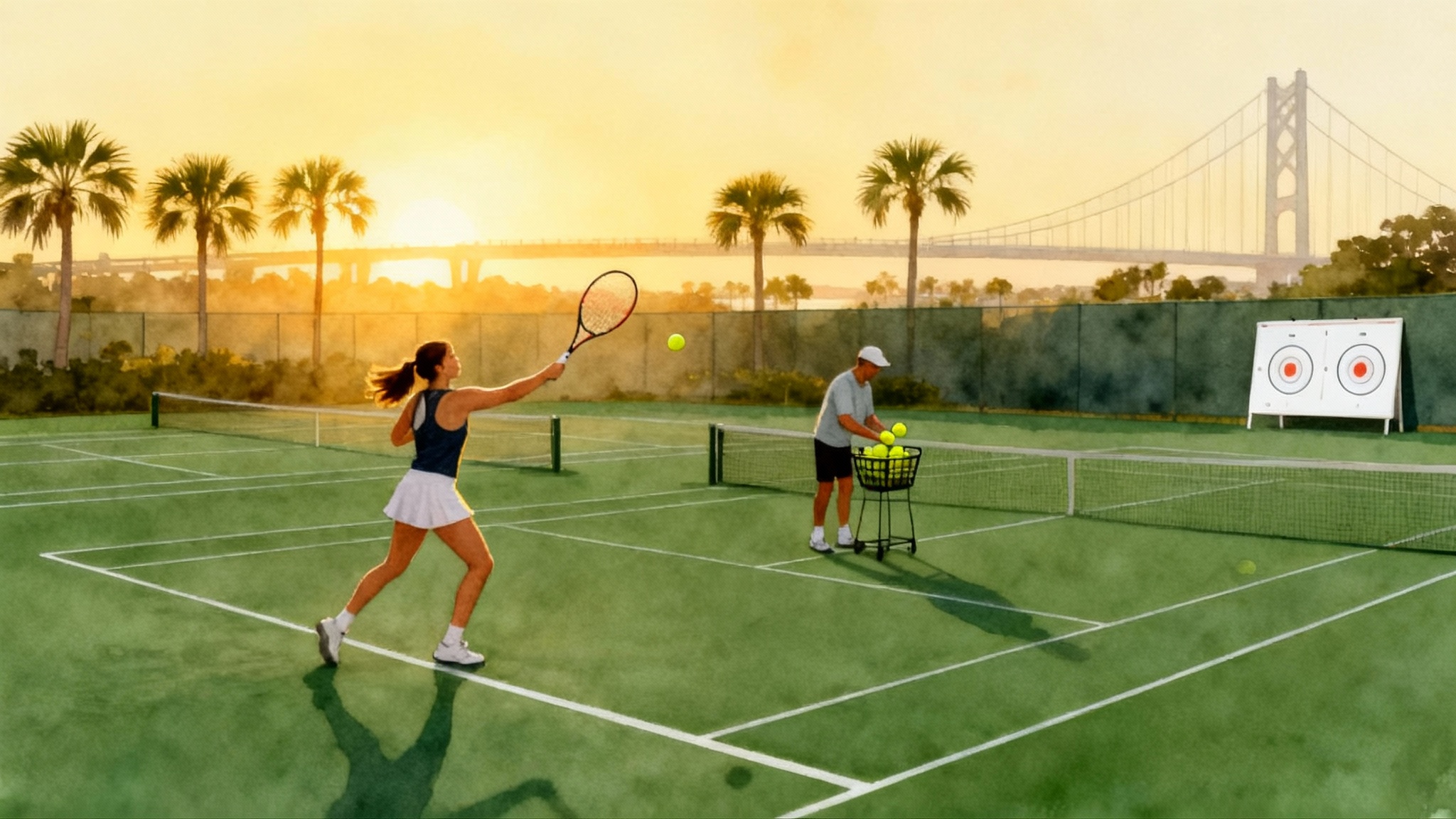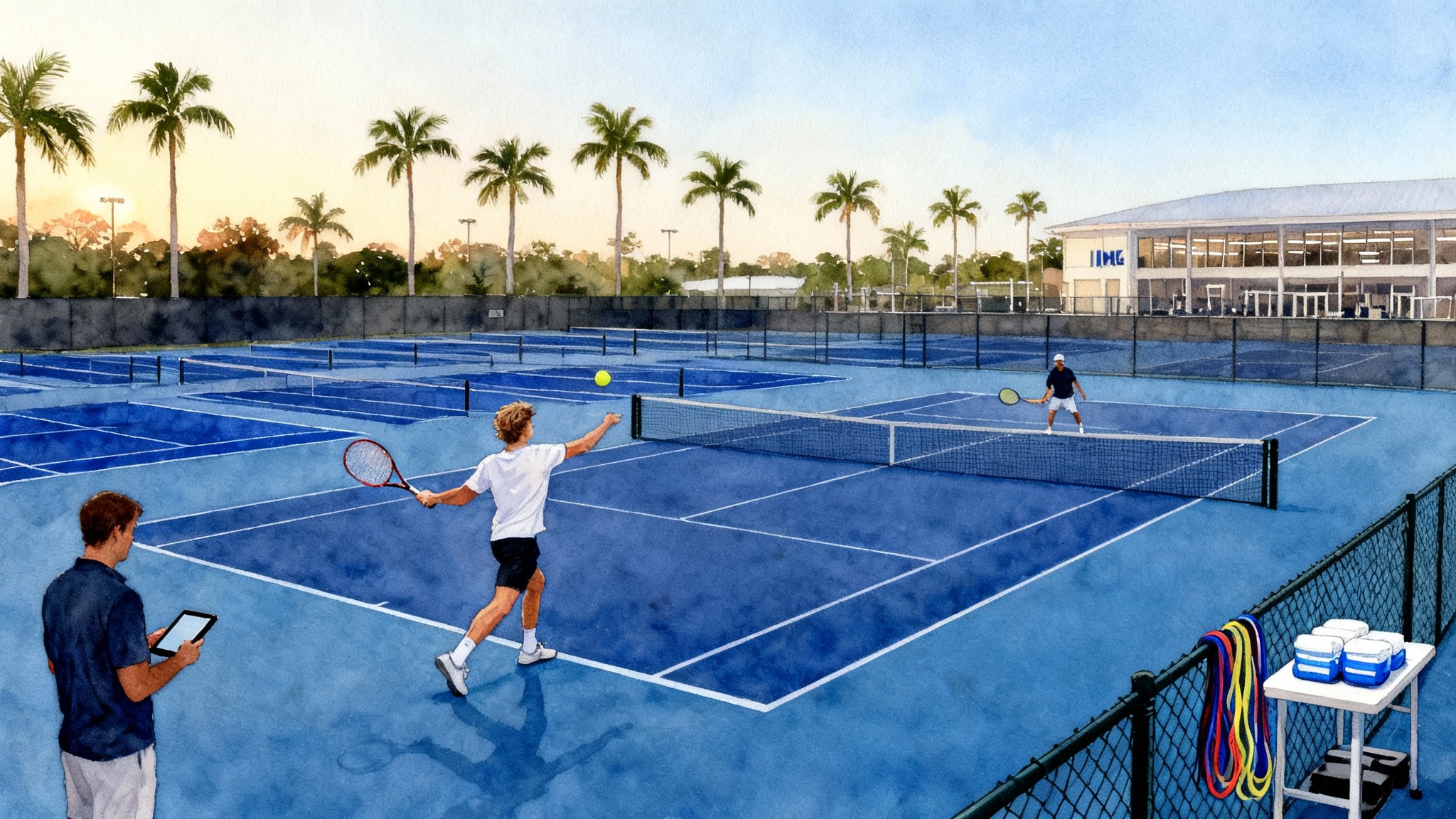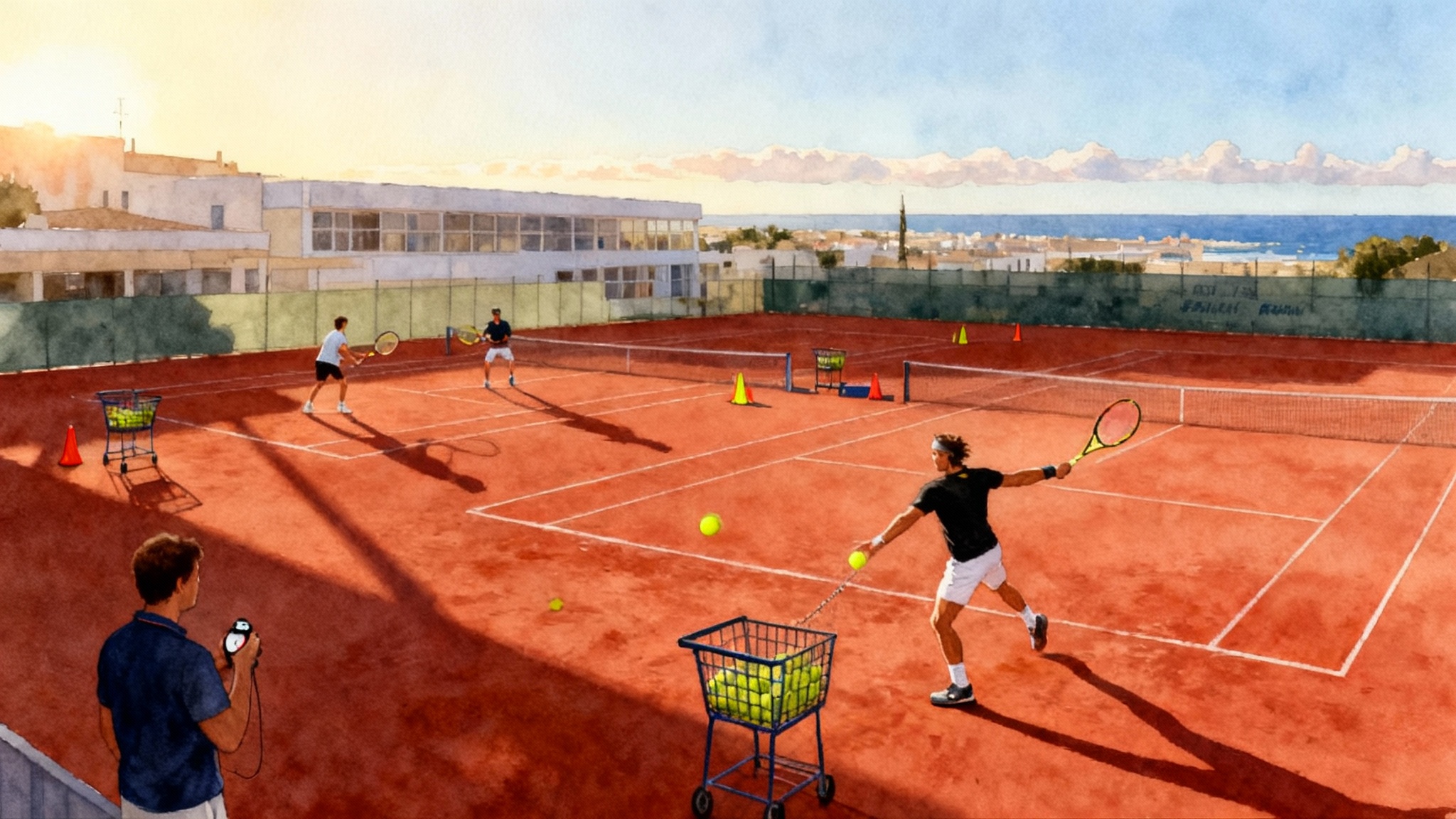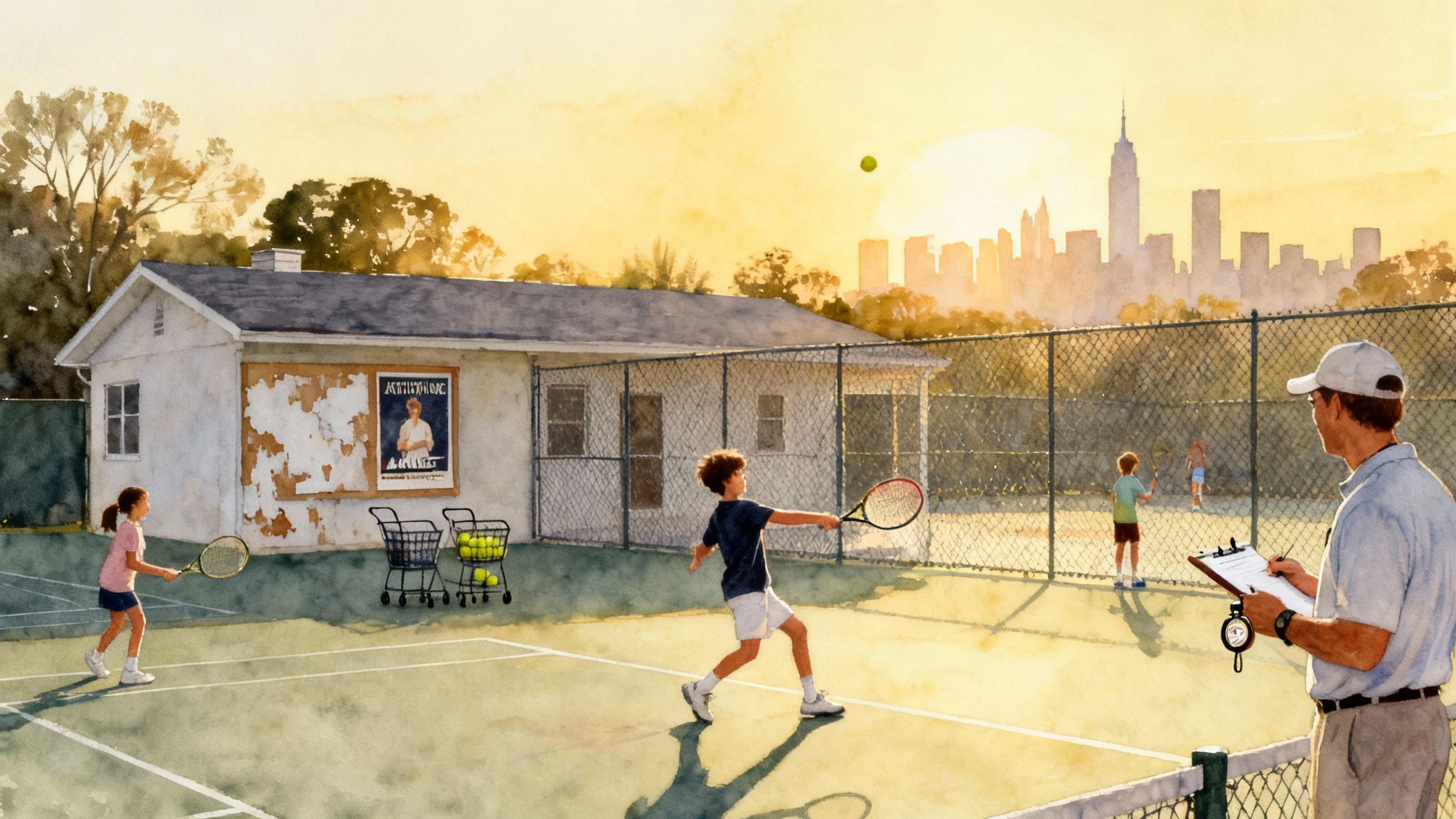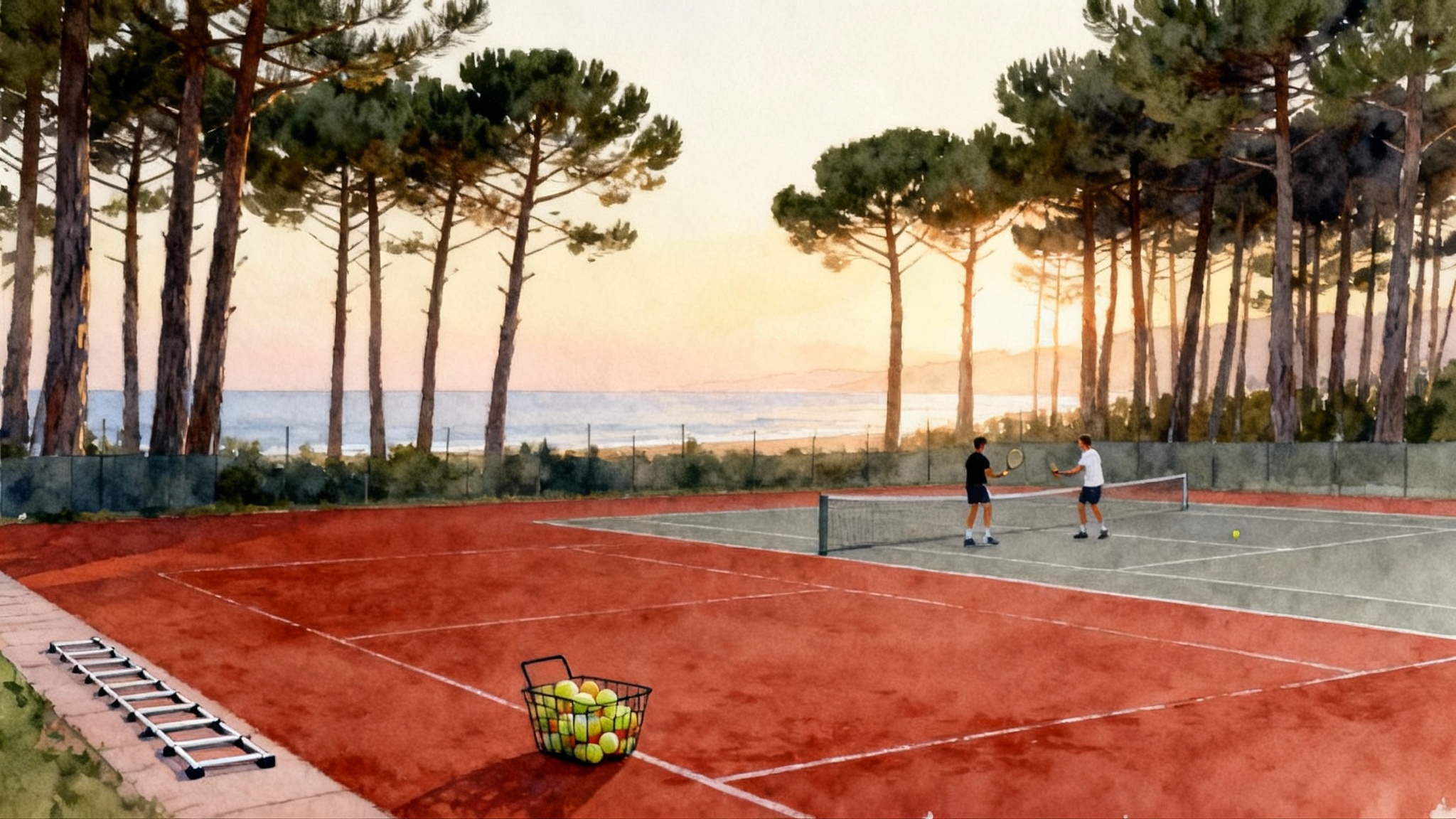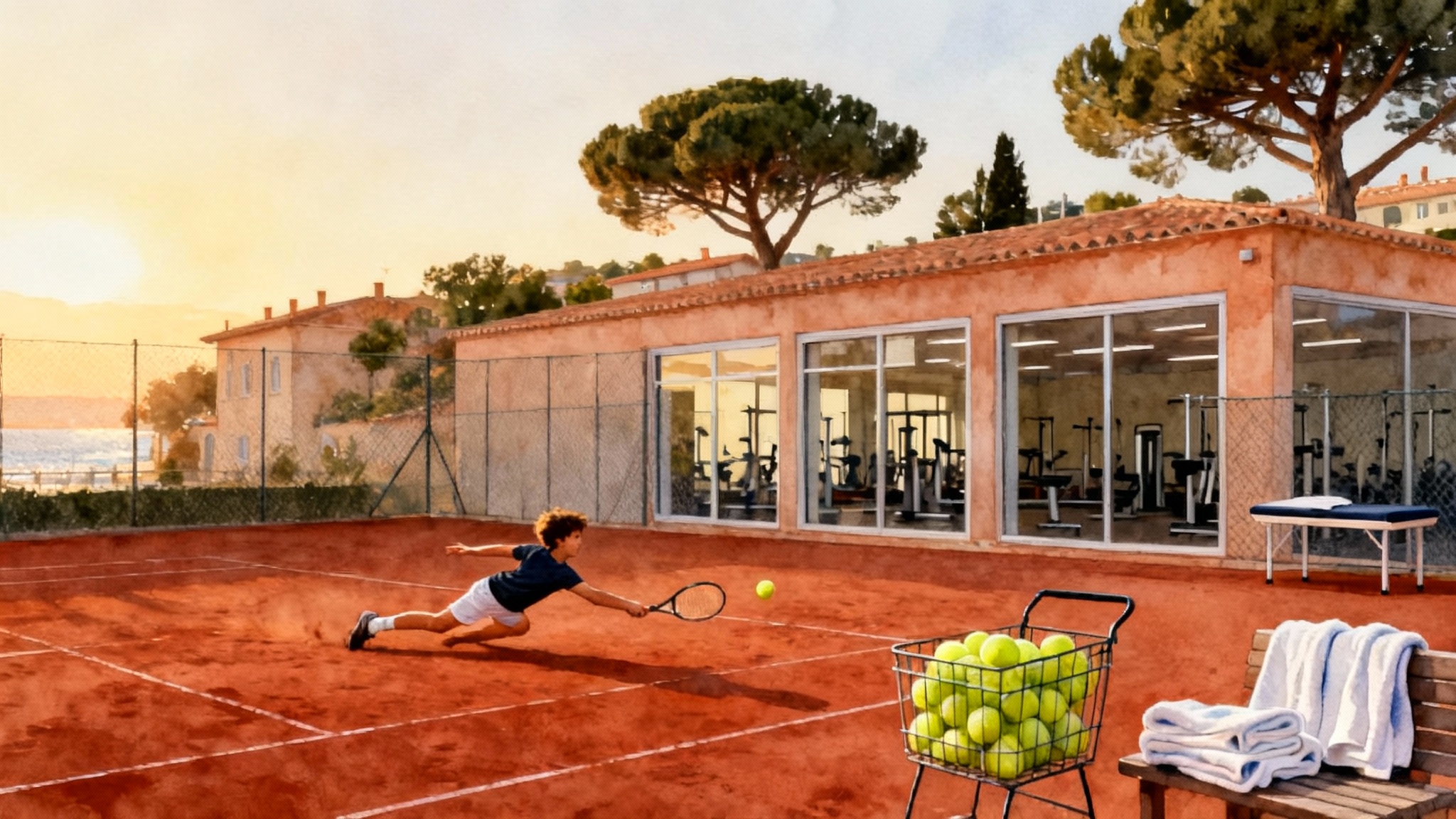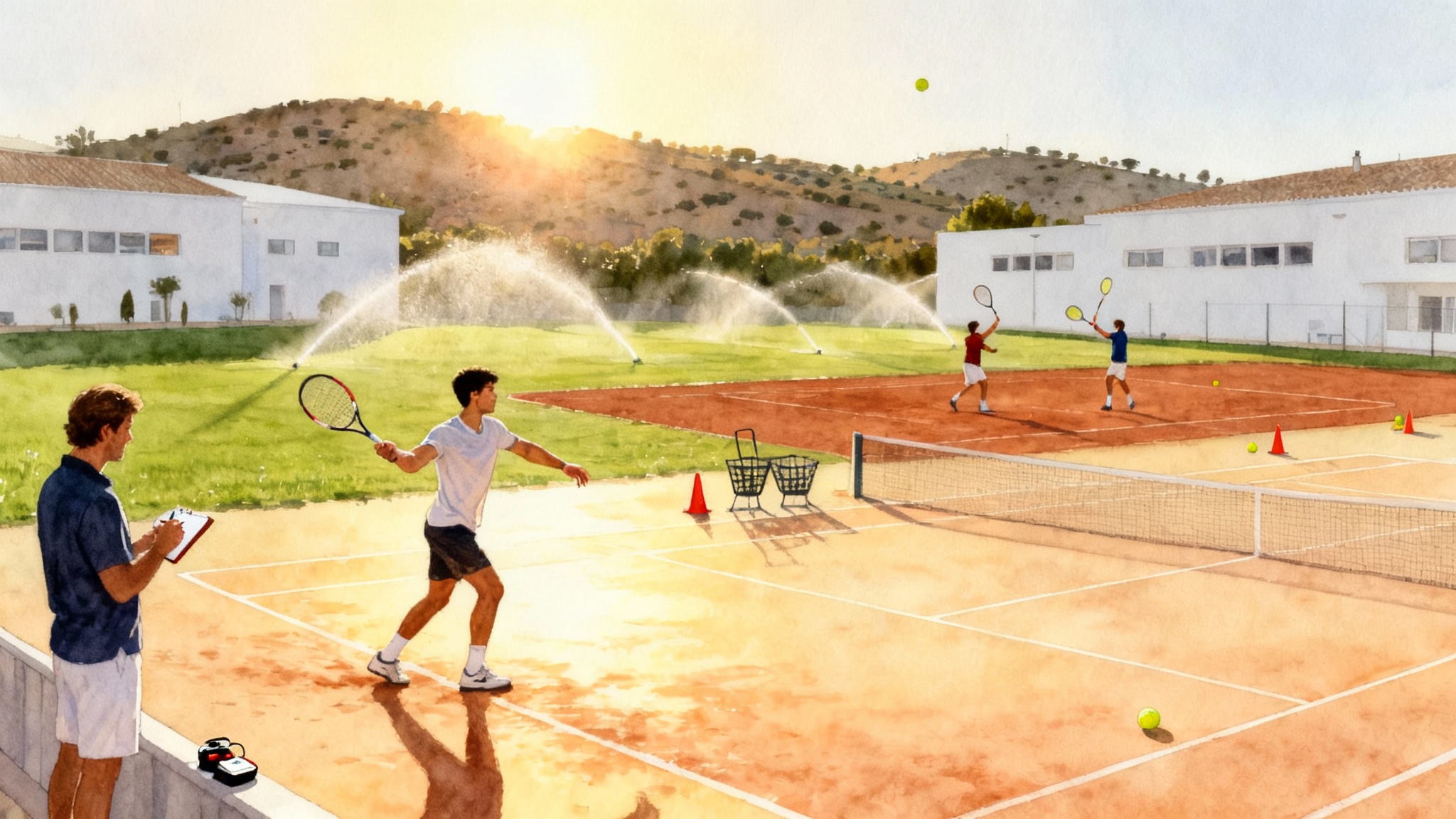From Delray to Côte d’Azur: How Champ’Seed Shaped Coco Gauff
At 10, Coco Gauff entered Patrick Mouratoglou’s Champ’Seed pipeline and began French clay blocks at the academy. We trace how that support, plus her 2023 coaching reset, powered her from junior Paris champion to Grand Slam winner, with parent-ready takeaways.

The road from Delray to the Riviera
Watch Coco Gauff sprint into a backhand corner and turn defense into attack, and you see an athlete built for many surfaces and moments. That adaptability traces to a pathway that began in Delray Beach, Florida, and stretched to the Côte d’Azur, where a 10-year-old Gauff entered Patrick Mouratoglou’s ecosystem and the Champ’Seed Foundation.
At that age, most kids are still sampling sports. Gauff was already collecting proof that she could be exceptional. Her family kept development grounded in South Florida, but the door to Europe opened early. According to the academy’s own profile, Gauff was identified by Mouratoglou at 10 and entered the Champ’Seed program that supports promising juniors with resources to train at elite level. She began recurring training blocks on French clay at the Mouratoglou Academy near Nice, building the movement, point construction, and patience that clay courts demand. Mouratoglou’s academy profile of Gauff outlines that origin story.
What Champ’Seed actually does
For many families, the word “foundation” sounds abstract. Champ’Seed’s role is concrete. It helps close the gap between talent and the financial realities of high-performance tennis. That support can include access to world-class coaching and sparring, structured physical preparation, tournament planning, and exposure to a professional training environment. In practice, that means:
- Time on clay and hard courts with coaches who manage the junior-to-pro transition
- Fitness and injury-prevention programs built around long seasons
- Match-play blocks with peers and visiting professionals
- Logistics support that makes a European training base usable for a young American
Families still shoulder choices and tradeoffs, but the foundation provides a runway. With that runway, Gauff’s team could use European clay to round out American power with European patience.
Why the French clay mattered so early
Clay forces a player to solve problems with their feet and their mind. Slides lengthen rallies. Patterns repeat across games. Winners are earned, not given. For a junior who already had pace and athleticism, that environment created balance.
Think of clay blocks like altitude training for a runner. You do not stay at altitude all year. You go up for a block to adapt your lungs, then come down stronger. Gauff’s French blocks sharpened her timing on heavy, high-spinning balls and taught her to finish points with shape as well as speed. Those habits traveled with her to faster courts.
A visible milestone arrived in June 2018, when Gauff won the Roland-Garros girls’ singles title. The trophy mattered, but the deeper win was the method: point construction, depth control, and counterpunching that had been stress-tested on red clay. When she qualified for Wimbledon’s main draw in 2019 and beat Venus Williams, many saw a grass-court breakthrough. Underneath it was the same foundation of movement and patterning.
The pro-environment effect
Training at a place like Mouratoglou Academy exposes a teenager to the rhythms of professional life. Courts turn over on time. Fitness blocks are scheduled. Recovery is planned. You are likely to hit on the next court to a Grand Slam semifinalist. That proximity resets a teenager’s sense of normal.
For Gauff, those years meant learning to be comfortable among professionals without losing the playfulness that makes her special. It also meant she could practice how to manage long days that include schoolwork, sessions, and media obligations. By the time she reached the second week of majors, the cadence felt familiar rather than overwhelming. We have seen similar benefits in other systems, including how JTCC forged Tiafoe.
Distance learning while chasing tournaments
Families considering a similar path often ask the same question: how do you keep school on track when your child is hopping from Delray to the Côte d’Azur to junior events across Europe?
Here is a working model many academies and families use, and that Gauff’s family embodied in their own way:
- Treat school like a second daily practice. When the schedule says ninety minutes of algebra at 2:30 p.m., it is as non-negotiable as serves at 4:00 p.m.
- Front-load academics during base weeks. When a travel block approaches, complete projects in advance to create space for back-to-back match days.
- Use tournament weeks for maintenance learning. Keep math and languages ticking with short daily sessions, then load heavier assignments during training blocks.
- Choose a school partner that understands elite sport. You need attendance flexibility, asynchronous coursework, and a single point of contact for teachers.
The tradeoff is not small. But when the structure is clear, academics become part of the performance plan rather than a source of guilt or conflict.
The 2023 reset that unlocked a first major
Even with the best foundation, progress is not linear. After a shaky spring in 2023, Gauff and her team reset. Spaniard Pere Riba joined ahead of the grass season, and in August respected coach Brad Gilbert came on as a consultant. The chemistry clicked, and the wins followed during the North American summer: Washington, Cincinnati, and the United States Open in September.
The United States Tennis Association’s own recap captured how the blend worked: Riba provided daily structure and continuity while Gilbert sharpened tactics and simplified between-point choices, helping Gauff play on the front foot more often. The result was a player who trusted her patterns and managed tight scorelines with calm. US Open’s article on the partnership explains that dynamic.
This was not a rejection of her earlier development. It was a layering exercise. The clay-earned patience remained, but her return position edged forward. The forehand backswing grew tidier under stress. Serve targets became clearer. You could see the French discipline meeting American acceleration.
How the academy blocks fit into a pro calendar
Parents often ask whether to commit full time to a European academy or to use it in blocks. Gauff’s path shows a middle road that many families can adapt:
- Build a home base near trusted coaching. For Gauff that was Florida with her family in the early years.
- Schedule targeted two to four week blocks at a high-level academy during key windows. Pre-clay season is a natural fit for red-clay immersion. Pre-summer hard court season is another.
- Use each block to chase one theme. For example, one clay block could focus on depth and height to the backhand corner. A late-summer block might emphasize first-serve plus forehand patterns.
- Always finish a block with match play. Replicate tournament stress, then debrief specifics you can carry into the next event.
Families seeking strong school integration can also study Emilio Sánchez Academy Barcelona for a model that blends training with academics.
Scholarship pathways and how to approach them
Champ’Seed is not the only scholarship pathway in tennis, but it is among the most visible. If you are exploring support for your child, think about it with eyes open:
- Fit is as important as funding. Foundations look for players who match their coaching philosophy and will use the resources well. Share specific goals and a realistic tournament plan.
- Build a clear case. Video that shows point construction, not just winners. Results that demonstrate competitiveness at the right age group. Feedback from coaches who know the level.
- Expect accountability. Scholarships usually come with expectations around training attendance, behavior, and school progress. Treat these as guardrails that help your child thrive.
- Keep a parallel plan. Funding can change. Always know how you would continue development if a scholarship ends or your child’s needs evolve.
Gauff’s example shows the power of early support used strategically. She left the foundation when commercial backing made it possible, but the methods and relationships endured.
Pro-environment exposure without losing childhood
One of the quiet benefits of an academy like Mouratoglou’s is learning how professionals behave when no one is watching. That does not mean copying every ritual. It means absorbing standards.
Parents can help by asking debrief questions that guide reflection rather than demand perfection:
- What did you notice about how that top player warmed up their feet and eyes before practice?
- During the long rally games, what breath pattern helped you reset between balls?
- When you were nervous, which cue word got you out of your head and back into the point?
These prompts keep the focus on learning instead of results and help a child build their own toolkit.
Turning clay into an all-court game
Clay blocks are not just for clay results. They harden skills that travel. Here is how to translate them into a year-round edge:
- Make height your default miss. The clay habit of net-clearing margin pays dividends on hard courts, where one extra foot of net clearance still produces depth and safety.
- Keep the legs organized. Sliding teaches low, strong base positions. On hard courts, convert that to quick split steps and balanced first moves.
- Treat every short ball as a decision tree. Do you use an approach with heavy shape to the backhand, or a drive through the middle to take time? Clay teaches the options. Choose deliberately on faster courts.
- Practice the patience to develop a point and the courage to finish it. The best all-court players toggle between the two without hesitation.
You can see this transfer in other pathways, such as how Equelite forged Carlos Alcaraz.
What parents can copy from the Gauff pathway
You do not need a Grand Slam budget to borrow smart ideas from Gauff’s journey. Start with these:
- Use targeted blocks, not permanent moves. Two high-quality weeks on clay with clear goals can beat six unfocused months anywhere.
- Pair environment with agency. Being around the pros is valuable only if your child leaves each day with one concrete habit to test in matches.
- Build a two-coach perspective. A primary coach who knows your child deeply, and a periodic consultant who refreshes tactics or technique. The 2023 Riba-Gilbert blend showed the upside of complementary voices.
- Make school part of the plan, not the problem. Schedule academics with the same seriousness as practice. Small daily wins compound over a season.
- Keep feedback specific. Replace “play aggressive” with “look for forehand inside-in when the return lands short.” Replace “move your feet” with “start the return stance with a wider base.”
A realistic checklist for families
If your child is 10 to 14 and you are deciding whether to pursue academy blocks and scholarships, walk through this checklist:
-
Developmental readiness
- Can your child rally consistently to 20 balls crosscourt on both sides?
- Can they serve to three targets on each side with reliable spin?
- Do they enjoy match play enough to handle two-match days?
-
Emotional readiness
- Do they tolerate discomfort and novelty without melting down?
- Can they communicate with a new coach in short, clear sentences?
-
Family readiness
- Do you have a realistic travel budget and a backup plan if funding changes?
- Can one adult travel or coordinate logistics during key blocks?
-
Academic plan
- Do you have a school partner that will support competition calendars?
- Is there a weekly study schedule written on the same calendar as training?
If most answers are yes, you can test a small block and evaluate with data rather than guesswork.
The through-line: continuity with evolution
Looking across Gauff’s timeline, you can see three constants:
- Early exposure to world-class environments without abandoning home base.
- Targeted clay work that sharpened movement and patterns.
- Willingness to evolve her team when the results called for it, culminating in the 2023 summer run with Riba and Gilbert and the first major in New York.
None of this guarantees future titles for anyone. It does, however, show a repeatable framework. Start with supportive structure. Add purposeful environment. Layer in coaching voices that respect what came before while solving today’s bottleneck.
The last word
From Delray to the Côte d’Azur, Gauff’s rise shows that geography can be strategy. A scholarship gave access. Clay gave patience. A 2023 reset gave clarity. If you are a parent mapping a path, think like a tour coach and a school principal at once. Choose a few blocks that make your child’s strengths sharper. Set up a study plan that travels. Seek feedback that is plain, measurable, and tied to the next match. Tennis rewards those who learn fastest. The right pathway simply creates more chances to learn well and compete with joy.
